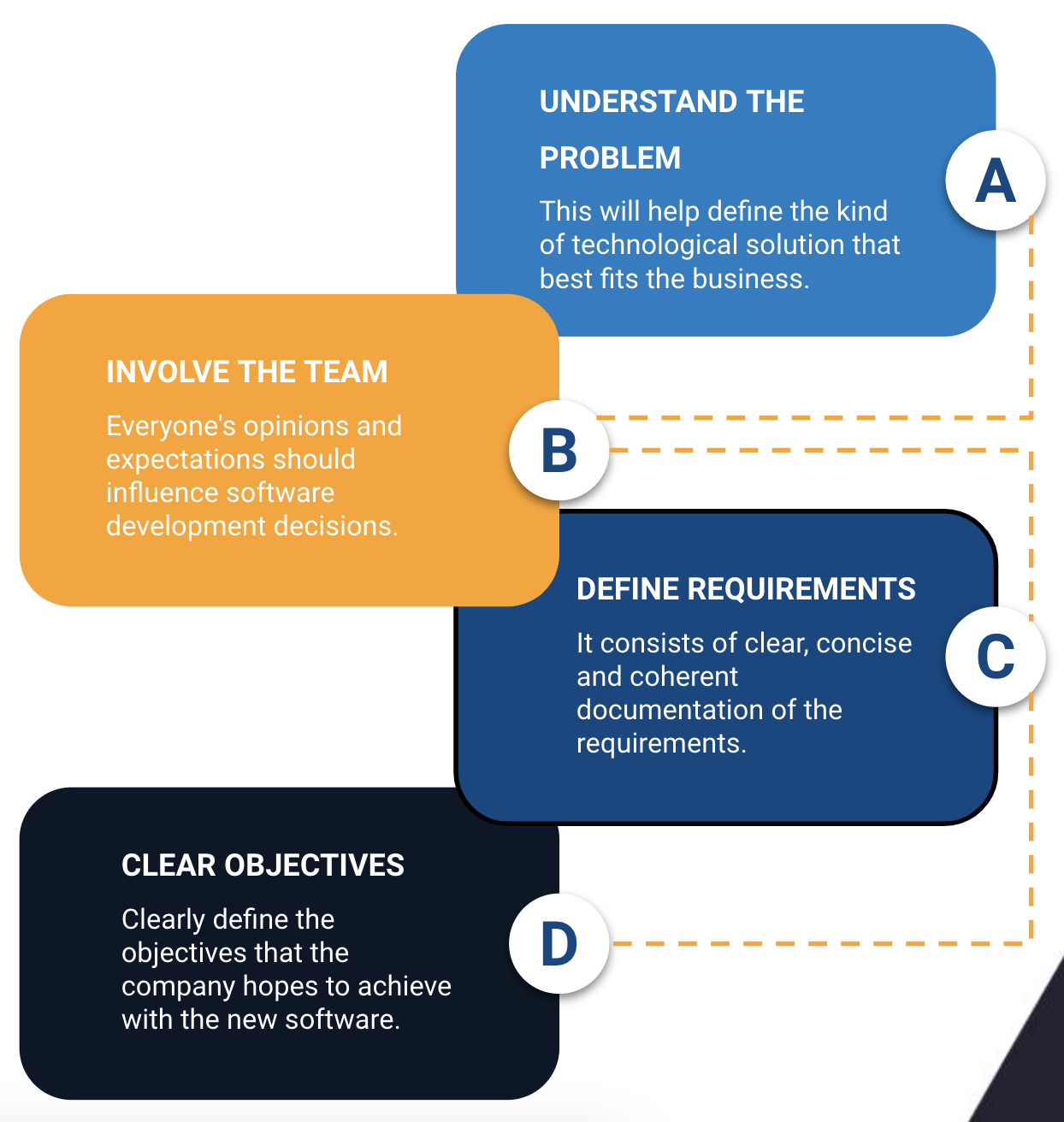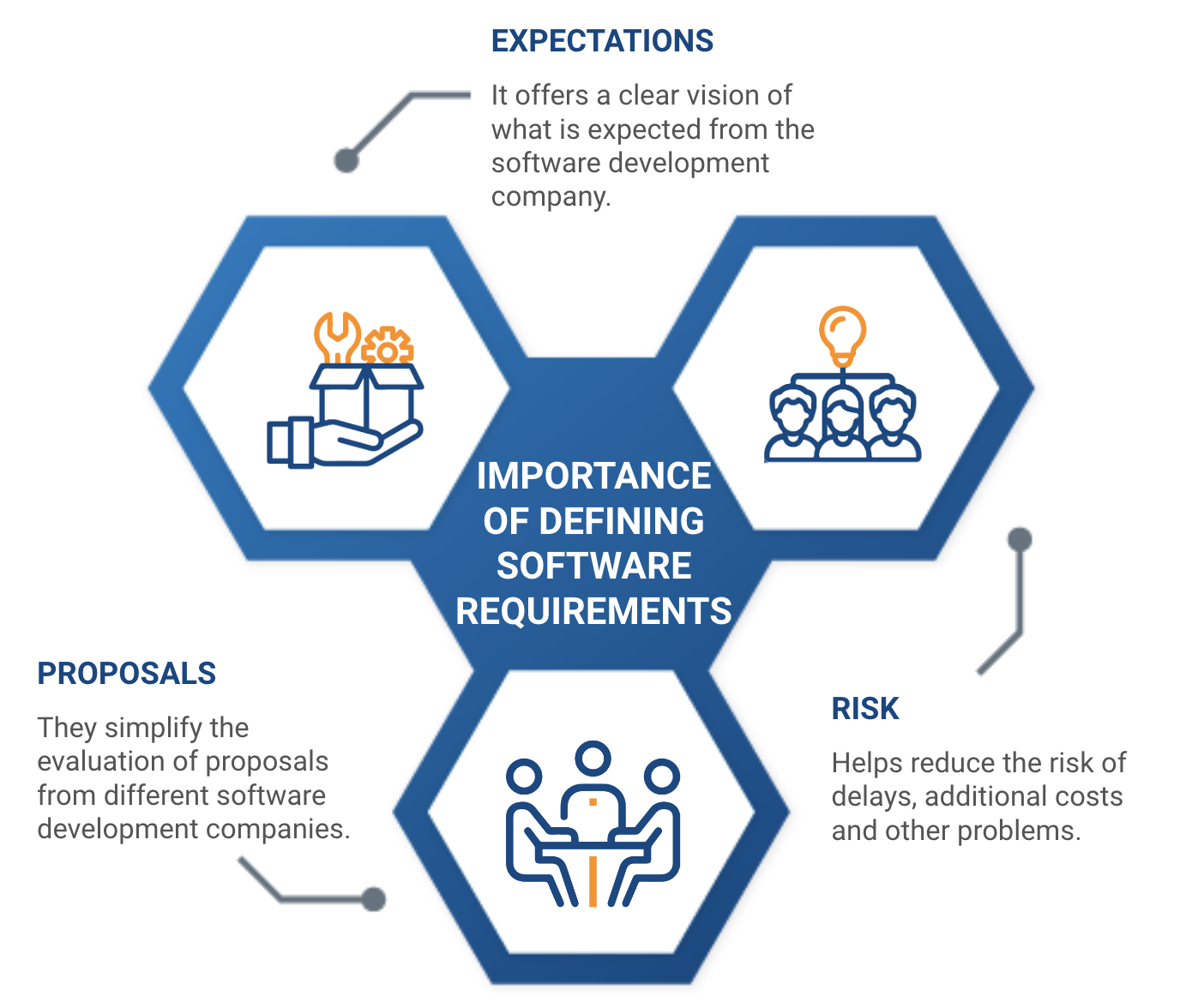
How to define the requirements of a software project
October 06, 2023
Table of contents
Quick Access

The precise definition of requirements is essential for the success of a software development project. Requirements are the foundations on which the software is built; They are the rules of the game that guide developers every step of the way.
Effectively defining these requirements is an art and a science, requiring technical skills, experience and a deep understanding of customer needs. In this blog we will talk to you about this topic and the aspects that you should take into account in this regard.
Tips for defining the requirements of a software project
-
Understand the problem your business has
“The first step in defining software requirements is to understand the problem that the software is intended to solve. This means identifying the goals, objectives and scope of the project, as well as the context, domain and assumptions”, they explained in a LinkedIn article.
-
Define the ideal solution according to the problem
The next step involves determining the solution that the software will provide, based on an understanding of the problem at hand. This involves detailing the features, functions, and behaviors that the software will offer, along with the quality attributes, such as performance, reliability, security, and ease of use, that the software will meet.
-
Involve all the teams in your company in this process
All key teams within the organization, such as end users, department managers, and IT specialists, should be involved in the decision to choose or define the new software solution. Everyone's opinions and expectations must influence decisions about software development, since they will interact directly with the system that will be created and implemented.

-
Define the requirements
The third step involves clear, concise and coherent documentation of the requirements that have been defined. This involves expressing requirements in formal or informal language, depending on the project's methodology and standards.
It is also necessary to categorize requirements into different types, such as functional, non-functional or business, and assign priorities, identify dependencies or assess associated risks. To carry out this process, various tools can be used such as text documents, spreadsheets, diagrams or specialized software, which facilitate the documentation and efficient management of requirements.
Think not only about the technical and functional requirements of software development, companies must also take into account business requirements and market requirements, since this information can also influence the specifications of the final software product, they explained on the DesignRush portal.

-
Set clear goals
Clearly define the objectives that the company hopes to achieve with the new software. Set specific, measurable goals, such as improving operational efficiency, reducing costs, or increasing customer satisfaction.
-
Conduct pilot tests and obtain feedback
Implement small pilot tests of the software in specific areas of the company. Collect comments and suggestions from users during pilot tests to adjust requirements according to real needs.

Why is it important to define these requirements before software development?
Establishing project requirements is of utmost importance when seeking the services of a software development company. Clarity in requirements ensures that everyone involved has a shared understanding of the goals and how they will be achieved. This helps prevent misunderstandings, delays, and additional costs during development.
Below, we highlight some reasons that explain why defining project requirements is essential:
Set expectations: Precise definition of requirements provides a clear view of what is expected from the software development company. This covers the project scope, required functionalities, timelines, and budget. This ensures that everyone is on the same page and understands their responsibilities, they commented on a Quora forum.
Facilitates evaluation of proposals: Well-defined requirements simplify the evaluation of proposals from different software development companies. By having a uniform set of requirements, it becomes easier to compare proposals and determine which company is the best option for the project.

Minimizes risk: Clearly defining requirements helps reduce the risk of delays, additional costs, and other problems. When everyone has a clear understanding of the tasks at hand, it is easier to identify potential obstacles and take steps to mitigate them.
By following these tips and conducting thorough internal planning, a company can effectively define its software project requirements, establishing a solid foundation for collaboration with an external vendor. Clarity in internal requirements facilitates more effective communication with suppliers and increases the chances of developing software that meets the company's expectations and needs.
Do you need a software provider to support you on your next project? At Rootstack, we have +12 years of experience supporting companies in their digital transformation. Contact us!
We recommend you this video
Related Blogs
-6.45.03-p.m.png)
Migrating to Oracle Cloud: Strategies and Considerations
-9.01.17-a.m.png)
Nearshore development helps midsize companies grow
-9.01.17-a.m.png)
Methodologies used by IT staff augmentation companies
-9.01.17-a.m.png)
Hire a software development team in Colombia
-2.10.50-p.m.png)
What you gain by hiring a software provider in Panama
-3.57.25-p.m.png)
